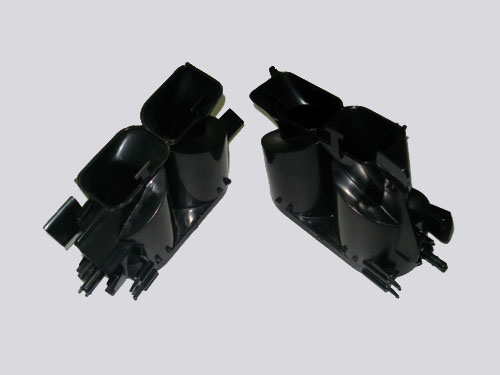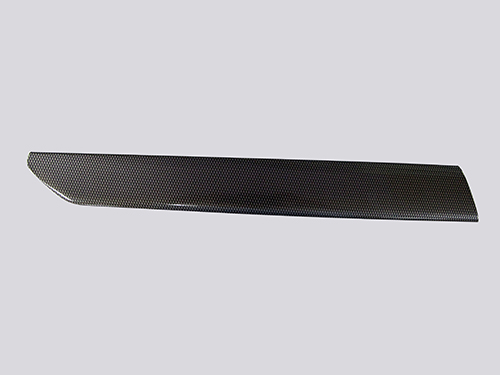There are various types of injection molding processes for plastic molds. Different processes are designed for different plastic part structures, material properties or production requirements. The core is to achieve specific molding effects by adjusting the injection molding machine, mold structure and process parameters. The following are the common classifications and characteristics of injection molding processes:
I. Classification by forming principle and structural characteristics
1. Ordinary injection molding (traditional injection molding
Principle: The most fundamental injection molding process involves injecting molten plastic into a closed mold cavity through a screw. After cooling and solidification, the mold is opened to remove the part.
Applicable scenarios: It is suitable for the vast majority of plastic parts with simple structures and uniform wall thickness (such as daily necessities, electronic casings, toys, etc.).
Features: The equipment and molds have a simple structure, low cost, and high production efficiency. It is the most widely used process.
2. Two-color/multi-color injection molding
Principle: Through two or more injection systems, plastics of different colors or materials are injected into the same mold cavity successively (or simultaneously), thus forming a two-color/multi-color or composite structure of the plastic part.
Category
Sequential injection molding: The mold rotates or moves, and different materials are injected in stages (for example, the base color is injected first, followed by the pattern).
Co-injection molding: Two materials are injected simultaneously and fused in the cavity (such as soft and hard combined plastic parts, such as the soft rubber anti-slip area + hard rubber main body of a toothbrush handle).
Applicable scenarios: Plastic parts that require color matching and functional zoning (such as automotive interior parts, tool handles, cosmetic shells).
Features: Reduces the later assembly process, enhances the integrity of the plastic part, but the mold structure is complex and the equipment cost is high.
3. Insert Molding
Principle: First, place metal inserts (such as nuts, bolts, metal sheets) or inserts made of other materials (such as fiberglass, ceramics) into the mold cavity, then inject molten plastic. After cooling, the plastic and the inserts are tightly combined into one.
Applicable scenarios: Products that require enhanced strength of plastic parts (such as connectors with metal threads) and the realization of electrical/thermal conductivity functions (such as electronic component casings).
Note: The inserts need to be preheated (to prevent the plastic from cooling too quickly and causing poor bonding), and the shape of the inserts should be designed with hooks or rough surfaces to enhance the interlocking force with the plastic.
4. Gas-Assisted Injection Molding
Principle: During the plastic injection process or after the injection is completed, high-pressure inert gas (usually nitrogen) is injected into the molten plastic. The gas pushes the melt to fill the cavity and form a hollow structure (airway) inside the plastic part, while the gas pressure offsets part of the injection pressure.
Advantages
Reduce the internal stress of plastic parts and lower the risk of warping and deformation.
Save raw materials (hollow inside) and reduce the weight of plastic parts;
It can form large and complex plastic parts with uneven wall thickness (such as car door panels and TV casings).
Limitations: Additional gas generation equipment is required, gas channels need to be designed for the mold, and the control of process parameters is relatively complex.
5. Water-Assisted Injection Molding
Principle: Similar to gas-assisted, but using high-pressure water (instead of gas) to push the molten plastic, water has a stronger cooling effect and can set faster.
Advantages: The surface of the plastic part is smoother (water has better fluidity than gas, which can reduce bubbles and shrinkage marks), the cooling time is shorter, and it is suitable for forming long and tubular plastic parts (such as door handles, infusion tubes).
Limitations: The mold structure that requires waterproofing and the increased cost of water recycling and treatment.
6. Microfoaming injection molding (MuCell injection molding
Principle: During the plastic melting stage, supercritical fluids (such as carbon dioxide or nitrogen) are injected to form uniform tiny bubbles (with diameters of 5-50μm). These bubbles are injected into the mold cavity along with the plastic and expand, filling the mold cavity while achieving an integrated "foaming - molding" process.
Advantages
The weight of plastic parts is reduced by 10% to 30%, and the cost of raw materials is lowered.
Internal bubbles can absorb shrinkage stress, reducing shrinkage marks and warping.
Reduce the injection pressure (30%-50% lower than traditional injection molding) and extend the mold life.
Applicable scenarios: Plastic parts that require lightweight and high strength (such as automotive structural parts, electronic device frames).

Ii. Classification by material properties
Injection molding of thermoplastic plastics
Principle: By taking advantage of the reversible properties of thermoplastic plastics (such as PP, ABS, PC), which melt when heated and solidify when cooled, they can be repeatedly molded.
Features: Mature technology, wide range of applicable materials, and plastic parts can be recycled and reused. It is currently the most mainstream injection molding method in application.
2. Injection molding of thermosetting plastics
Principle: Thermosetting plastics (such as phenolic resin and epoxy resin) undergo chemical cross-linking reactions when heated and pressurized. Once cured, they cannot be remelted and are shaped in one molding process.
Applicable scenarios: Plastic parts that require high temperature resistance and high strength (such as electrical insulating parts, automotive brake pads).
Features: The mold needs to be heated (usually 150-200℃), the material is not recyclable, and the control requirements for process parameters are higher (to prevent premature or too late curing).
3. Elastomer injection molding (rubber injection molding
Principle: For thermoplastic elastomers (TPE, TPU) or vulcanized rubber, they are formed through injection molding machines, combining the elasticity of rubber and the processability of plastic.
Applicable scenarios: Seals, anti-slip pads, soft rubber keys, etc., often formed by two-color injection molding with hard plastics.
Iii. Classification by production efficiency and Automation
1. High-speed injection molding
Features: By increasing the injection speed (up to over 300mm/s) and the opening and closing mold speed, the molding cycle is shortened (suitable for thin-walled and small plastic parts, such as disposable tableware and mobile phone SIM card holders).
The injection molding machine should have a fast response speed, and the mold needs to be guided with high precision (to prevent wear during high-speed movement).
2. Low-pressure injection molding
Principle: Hot melt adhesive or low-viscosity plastic is injected into the cavity at a low injection pressure (typically 5-50bar), which is suitable for the packaging of fragile inserts (such as electronic components and circuit boards).
Advantages: It avoids damage to inserts caused by high voltage and is suitable for waterproof and insulating packaging of precision electronic components.
3. Automated Injection Molding (Integrated process)
Features: By integrating robots, conveyor belts, inspection equipment, etc., it realizes the full-process automation of "injection molding - part retrieval - deburring - inspection - packaging".
Applicable scenarios: Mass production (such as automotive parts, medical consumables), improving efficiency and reducing human errors.









